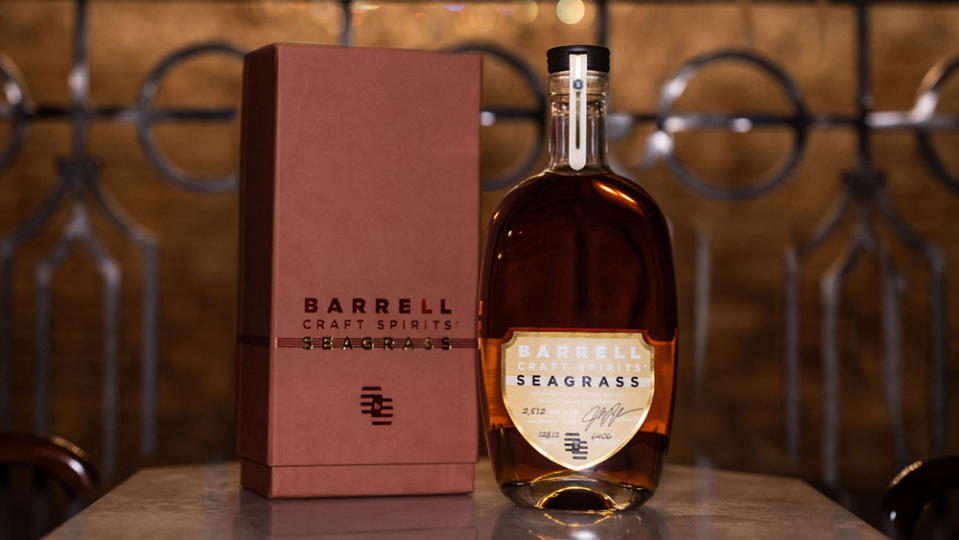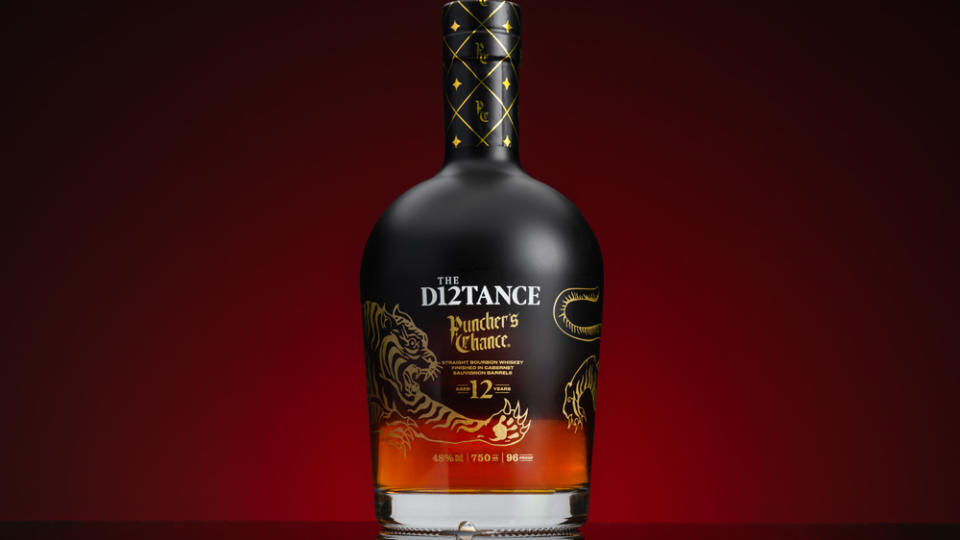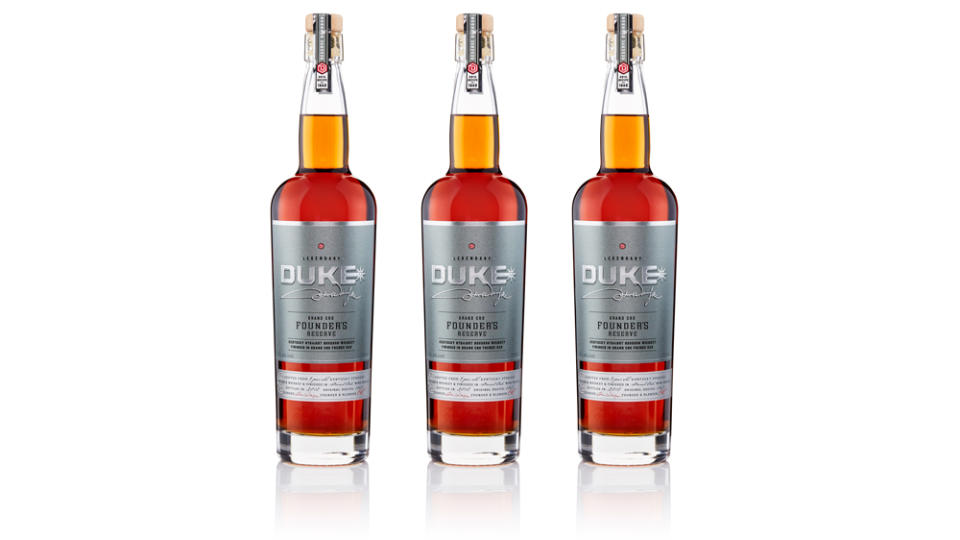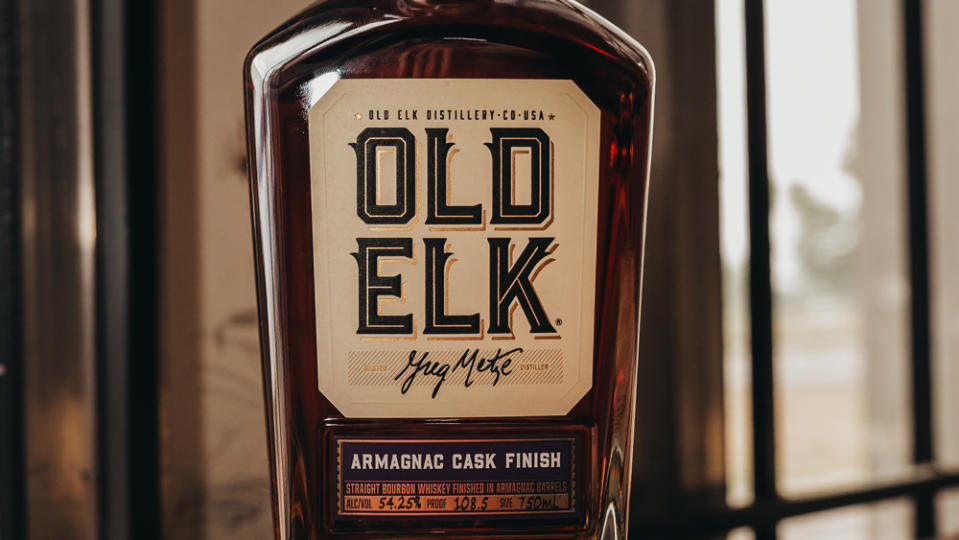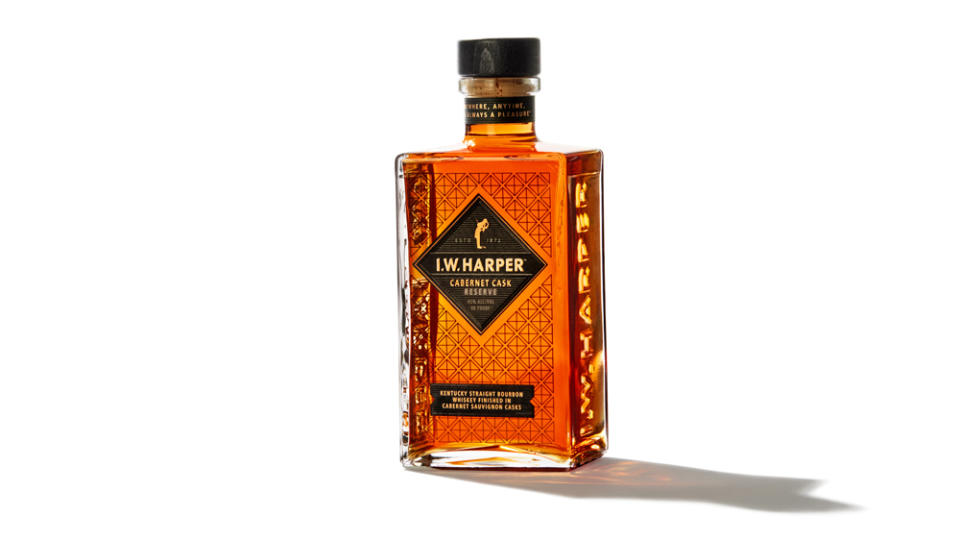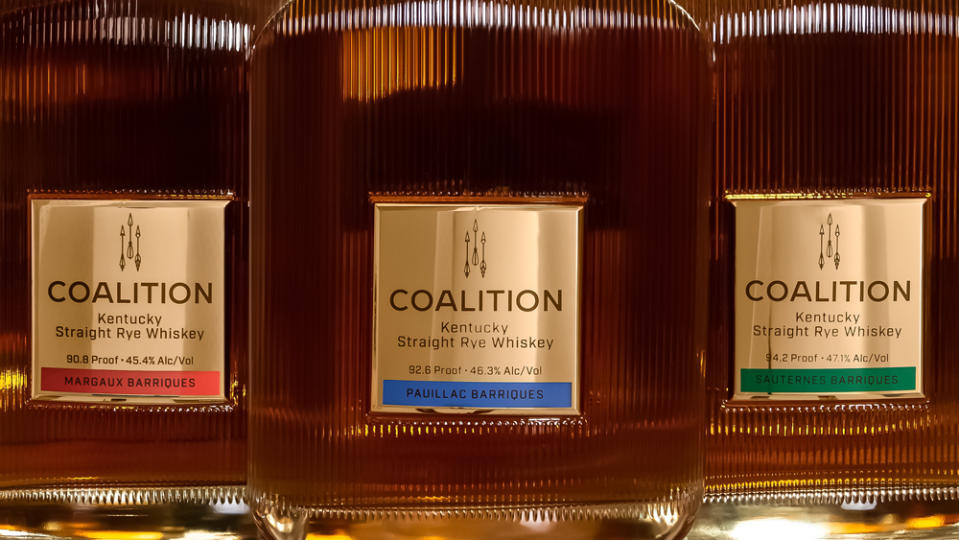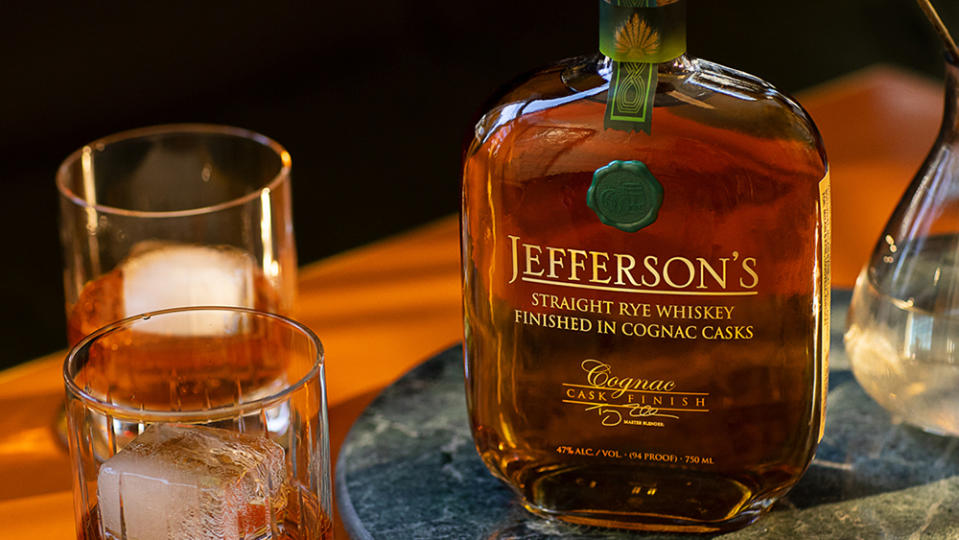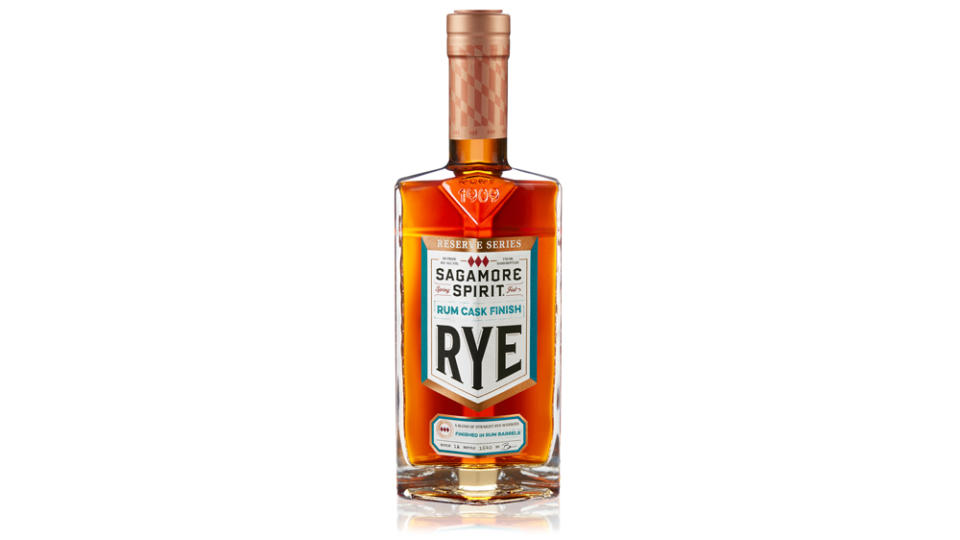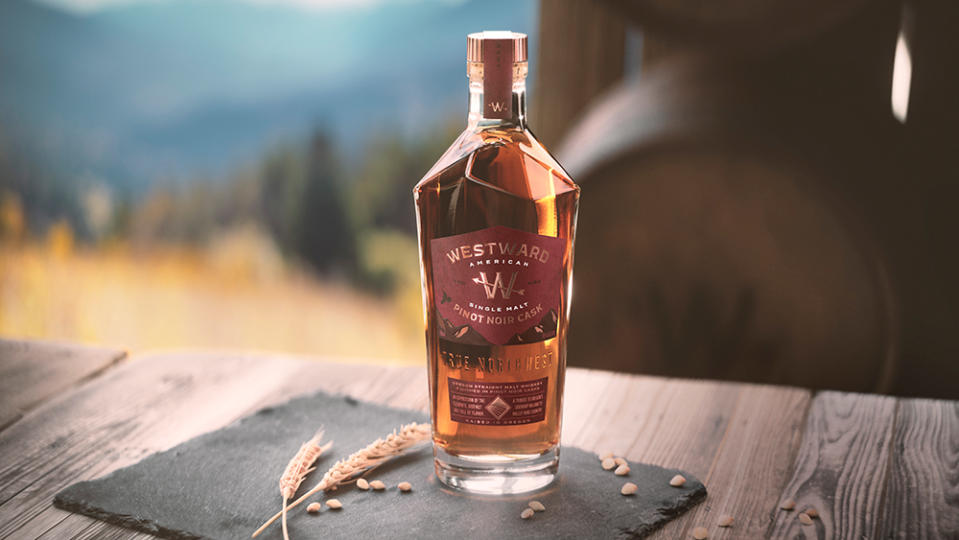The 11 Best Cask-Finished American Whiskeys to Drink Right Now

Finishing whiskey in a secondary cask after initial maturation has been around for years, at least in the scotch whisky world. The Balvenie was one of the first distilleries to do this when malt master David Stewart MBE started the practice in the early ‘80s, culminating in the release of the flagship DoubleWood 12 expression in 1993. It’s a pretty common technique now, employed by distilleries in nearly every whiskey-making region, from Scotland to Ireland to the States. Though bourbon is a firmly defined category, it can be finished in secondary casks, as well as rye and other whiskeys. The TTB—the federal agency that regulates alcohol—has made changes over the years about how cask-finished whiskey should be categorized, from Whiskey Specialty or Distilled Spirit Specialty in the past to, most recently, whiskey or a blend of whiskeys. And recently, the rules were modified so that the secondary maturation can be included as part of the whiskey’s age statement, as long as it’s differentiated (for example, four years in new charred oak and one year in a sherry cask).
Leonid Yangarber, founder of Coalition Whiskey, says that he appreciates any push for transparency. “Any time you can provide clarity for a consumer so they have full confidence in what they are buying, that’s a good thing,” he told Robb Report. “Now, do I think most folks truly care about how long something is finished versus how long the whiskey was originally aged? Probably not. They are likely more interested in the aging that makes up the original spirit, based on government regulations for the production of that spirit (ie: bourbon).”
More from Robb Report
Sagamore Spirit’s director of operations Ryan Norwood and distillery operations manager Max Hames have a slightly different take. “Whiskey labels are notoriously cryptic and anything that helps the consumer get a clearer picture of what’s exactly in the bottle is a good thing,” they wrote. “Finished whiskey is technically older, and being able to include the cask finish in the age statement only helps the consumer better understand what they’re drinking.”
So what exactly is the point of cask finishing a whiskey, particularly a bourbon or a rye? Critics argue that it’s a pointless process that affects the flavor in a negative way, altering the true character of the liquid in order to cover up flaws or imperfections. And sometimes they may have a point here, as a finish can become overpowering or even unpalatable when it isn’t done right. The team at Ireland’s Waterford Distillery are particularly vocal about their views on finishing often being used as a crutch or a correction to a poorly made whiskey. However, there are plenty of drinkers and distillers that love the process and consider it a way of opening up new worlds of flavor.
“Ultimately, we always look for casks and processes that enhance different aspects of our whiskey, rather than overpowering them,” said Norwood and Hames regarding their rye whiskeys. “The hope and intent when finishing our whiskey in a secondary cask is that [it] will take on positive flavors and aromas from both the barrel and the liquid that was previously in the barrel.” Sometimes they are surprised by the results, with experiments surpassing expectations. They start by actually adding some of the liquid that was aged in the finishing barrel into the whiskey to taste it, and then build different blends and put them into trial barrels which are monitored closely. If the results are good, the whiskey can be scaled up for a larger release.
While Sagamore Spirit uses a variety of different cask types to finish their special edition releases, Coalition is entirely focused on using wine barrels from Bordeaux. According to Yangarber, the process of selecting barrels is overseen by Ludwig Vanneron, “a world-renowned, accredited oenologist from esteemed Faculte d’oenologie de Bordeaux.” Barrels are chosen from top chateaus based on how they will complement the whiskey in terms of taste, smell, mouthfeel, texture and structure. “[The first goal is to] delicately enhance the whiskey with the flavors and aromas of the original wine,” said Yangarber. “You must be very careful not to let these flavors become too pronounced, thus changing the product completely. The second is to bring out characteristics in the whiskey that didn’t previously exist… In the end, we are looking to add complexity that enhances the drinker’s experience, not alter it beyond recognition.”
Clearly, there’s a lot more to consider when creating a cask-finished whiskey than just dumping your juice into another barrel. As more distilleries and producers employ this process here in America, it can be hard to choose what to try. Here’s a guide to point you in the right direction so you can explore some of the standouts in the field of cask-finished American whiskey.
BCS Gold Label Seagrass
Blending company Barrell Craft Spirits has a solid enough lineup of different bourbon batches to keep any whiskey fan happy. But the special releases are also usually excellent (if quite pricey), like the new Gold Label Seagrass. You may have been lucky enough to try the original Barrell Seagrass, a unique cask-finished rye whiskey, but this is the pinnacle of the series according to the brand. It’s a 20-year-old rye whiskey distilled in Canada that was finished in three types of barrels: Martinique rum, Malmsey Madeira and apricot brandy. The whiskey is bottled at cask strength of 128.12 proof, and has notes of fruit, spice, herbs and honey.
Puncher’s Chance The D12tance Straight Tennessee Bourbon
This Tennessee bourbon (note that it’s not a Tennessee whiskey, so no charcoal filter before barreling) from Wolf Spirit was matured for 12 years before being getting a California Cabernet Sauvignon wine barrel finish. Seventy barrels came from Kentucky’s IJW Spirits, who obviously sourced the whiskey from another distillery in Tennessee, with a mash bill of 84 percent corn, 8 percent rye and 8 percent malted barley. The wine barrel finish works nicely here, adding layers of dark berries and spice to a nutty, grain-forward, well-aged whiskey with a touch of oak and smoke on the palate.
Garrison Brothers Balmorhea
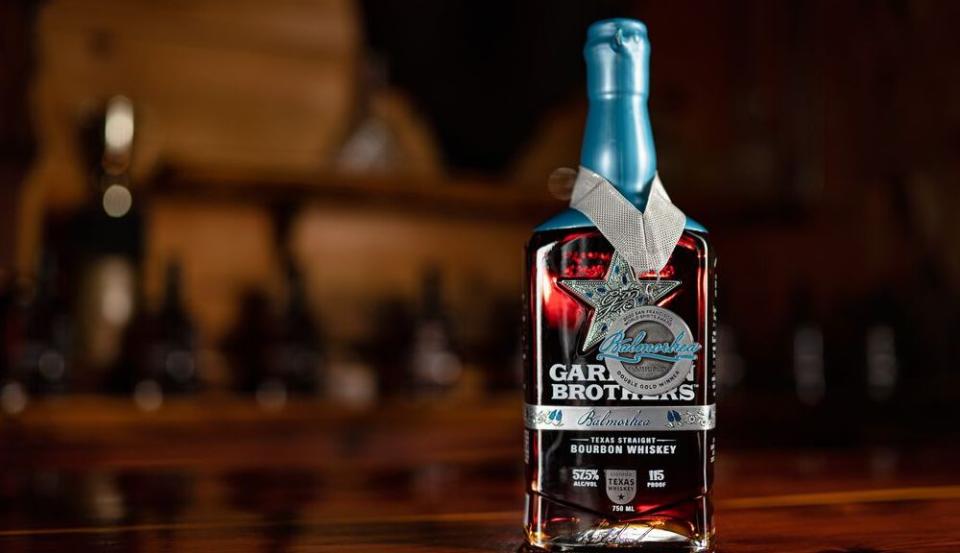
Garrison Brothers
A cask finish doesn’t always have to be in a completely different type of barrel to have an effect on the whiskey. Case in point is Texas distillery Garrison Brothers’ Balmorhea expression, which is a high-proof (115) bourbon that spends four years in new charred American oak, before being rebarreled for an additional year in another new oak cask. This essentially jumpstarts the interaction between whiskey and wood all over again, leading to big notes of vanilla, caramel, tannin and spiced fruit. If the Texas climate weren’t enough to make an impact on flavor during maturation, this finishing process seals the deal.
Duke Bourbon Grand Cru Founder’s Reserve
At first glance, this was not a whiskey I assumed I would think much of, given the weird John Wayne tie-in of the Duke Spirits brand. Icon status aside, frankly, Wayne was kind of a jerk and there’s enough celebrity booze out there from living legends. But this bourbon is really good, that’s all there is to it. It’s a nine-year-old whiskey sourced from an unnamed Kentucky distillery that is finished in French oak Grand Cru wine barrels. The balance of flavors indicates a well made bourbon that was thoughtfully given a secondary finish, and pulled from the barrels just in time. Definitely sip this one, but try making a cocktail with it too and you won’t be sorry.
Old Elk Armagnac Cask Finish Bourbon
Armagnac is kind of an underrecognized category overall in the US, and there really aren’t many casks finishes that happen in this type of French brandy barrel. Old Elk decided to put its high-malt bourbon in some Armagnac casks for about six months just to see what happens, and I’m glad they did. Former MGP master distiller Greg Metze helms the operation, sourcing and blending different whiskeys and timing the secondary maturation periods of the new cask finished series so it doesn’t overpower the whiskey. Dark berry, spice and some earthy notes join the fray, complementing the butterscotch and malted chocolate flavors of the bourbon quite nicely.
I.W. Harper’s Cabernet Cask Reserve
I.W. Harper is a bourbon brand owned by Diageo that claims the old Stitzel-Weller distillery as its ancestral home. Of course, it’s not actually distilled there, and the real source of this Kentucky whiskey is not disclosed. Regardless, the cask-finished version that came out last winter is worth checking out. It’s aged for four years before being put into Cabernet Sauvignon casks from California for a secondary maturation period and then bottled at Stitzel-Weller. The core I.W. Harper bourbon is decent, although not as good as the 15-year-old version. But this amps up the flavor profile of the former in a welcome way, with strong notes of berries, raisin and spice that shine through from start to finish.
Angel’s Envy Cask Strength Bourbon
Angel’s Envy is one of the best known and widely available cask-finished American whiskey brands you can find. The core expression is a four to six-year-old bourbon finished in port wine barrels for up to half a year, giving the whiskey a dark color and syrupy notes of candied fruit. There’s an annual cask strength expression of this bourbon as well, which is released in limited numbers. The 2021 release marked ten years of cask strength bourbon from Angel’s Envy, and continues to be an extremely popular bottle that usually sells out pretty quickly upon its release. You can still find some bottles online, but be prepared to pay a premium. This bourbon, finished in port wine barrels like the original, is worth it if you can afford a bottle. And at 120.4 proof, it’s very drinkable for a barrel-proof whiskey.
Coalition Kentucky Straight Rye Whiskey
Coalition Whiskey’s lineup of cask-finished rye whiskeys are intensely flavored, which seems to be the point here. There are three expressions to try, each with a different wine barrel finish – Pauillac, Sauternes and Margaux. Each is a 100 percent rye whiskey (10 percent malted rye) made at Kentucky Artisan Distillers and aged for at least five years before being finished in a Bordeaux wine barrel for up to nine months. The brand has also released a barrel-proof version of the whiskey that isn’t cask finished, so you can try it to see how it stands up against the others. There are really prominent tannin, fruit and spice flavors present in these whiskeys, tasting notes that will surely appeal to some more than others. But the intentions are loud and clear here, so anyone interested in exploring the world of powerful cask finishes should give these a try.
Jefferson’s Rye Cognac Cask Finish
This cask-finished whiskey from Jefferson’s is the second rye release from the brand (the first was a 10-year-old rye sourced from Canada). This time around, the whiskey is American and was finished for a minimum of nine months and maximum of 19 months in cognac casks sourced from France (the brand has released wine and rum cask-finished bourbons before). The effects here are subtle but tangible, with a bit of citrus, nutmeg and extra caramel present to round out the classic rye flavors, along with strong hints of cherry and grape. I suspect this is a younger rye than the original 10-year-old, but the backbone of the whiskey is strong and vibrant.
Sagamore Spirit Reserve Series Rum Cask Finish Rye Whiskey
The previous Distiller’s Select bottle from Sagamore Spirits was a really excellent tequila barrel finish, but this rum version is pretty solid too. It’s actually the second time the distillery has used this type of secondary maturation, but this new version is more widely available than the first. Five and six year old rye whiskey (sourced from another distillery) was put into South American and Jamaican rum barrels for ten months, infusing the already spicy and peppery spirit with notes of brown sugar, banana, tropical fruit, and a bit of cocoa.
Westward Pinot Noir Cask
Westward is a Pacific Northwest single malt distillery that is sort of an OG on the scene, having gotten its start in 2004 when the category of American single malt whiskey was not yet on most people’s radar. This cask-finished expression is the latest to join the core lineup, bringing it to a trio of whiskeys. The distillery takes its original, mature American single malt and fills French oak Pinot Noir barrels from Willamette Valley wineries like Bergstrom Wines and Suzor Wine for up to two years, allowing the flavors to mingle and blossom. This pairing makes sense, as the region is now almost as well known for its whiskey as it has been for its excellent wine over the years.
Best of Robb Report
The Ultimate Guide to Wagyu Beef, the World's Most Luxurious Steak
Why a Heritage Turkey Is the Best Thanksgiving Bird—and How to Get One
The 10 Best Wines to Pair With Steak, From Cabernet to Malbec
Sign up for Robb Report's Newsletter. For the latest news, follow us on Facebook, Twitter, and Instagram.
